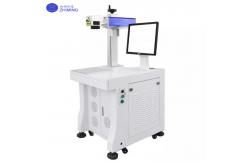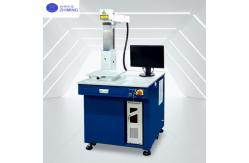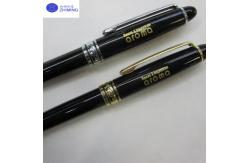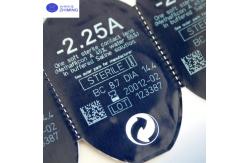Compact Fiber Laser Marking Machine Clean Maintenance Free Marking
|
|
Compact Fiber Laser Engraving Machine Clean Maintenance Free Marking for Workshops Small Businesses
Overview of Fiber Laser Marking Machines
Fiber laser engraving machines represent a highly advanced solution for permanent, high-definition marking on metals and certain non-metallic materials. Using state-of-the-art laser technology, these machines deliver exceptional marking precision at impressive speeds, all while operating with virtually no maintenance and zero consumables.
At the core of the machine is a solid-state fiber laser source, which emits a tightly focused laser beam through fiber-optic cables. This beam, typically in the 1064nm wavelength, interacts with the surface of the material by producing localized heating, which results in various surface changes such as discoloration, engraving, ablation, or annealing. The marking process is controlled by high-speed scanning mirrors and powerful software that allows for precise customization of text, images, data matrices, and more.
One of the key advantages of fiber laser systems is their compatibility with a wide range of materials including stainless steel, aluminum, titanium, brass, gold, anodized aluminum, and some high-performance plastics. They are ideal for creating long-lasting marks that are resistant to abrasion, chemicals, and UV exposure.
These machines are commonly used in modern production environments, from small businesses to large-scale automated factories. Their compact design, long operational life, and excellent performance make them suitable for a broad spectrum of applications, including product identification, compliance labeling, batch coding, and decorative engraving in industries like consumer electronics, aerospace, automotive components, and precision instruments.
How Fiber Laser Marking Technology Works
Fiber laser marking technology is based on the concept of converting electrical energy into highly focused optical energy that interacts with the surface of a material to produce a visible, durable mark. This process involves no mechanical contact or consumable materials, making it clean, efficient, and low-maintenance.
The system begins with a laser source that uses an optical fiber core doped with rare-earth elements such as ytterbium (Yb). When pumped with diode lasers, the ytterbium atoms are excited and emit a high-intensity laser beam at a wavelength of 1064 nanometers. This light is transmitted through fiber optics to a set of high-speed mirrors (galvanometers), which precisely control the movement of the beam.
Once focused by an F-theta lens onto the target surface, the laser beam interacts with the material through rapid, localized heating. This causes various physical or chemical surface reactions, such as:
The fiber laser’s high beam quality allows for ultra-fine resolution and high marking speeds. It can engrave detailed graphics, tiny characters, 2D data matrix codes, and serial numbers with micron-level accuracy. Because the energy is concentrated into such a small point, thermal stress on surrounding areas is minimal.
This precise, digitally controlled process enables integration into high-volume, automated manufacturing lines, making fiber laser marking a key technology in industrial part identification, compliance labeling, and traceability systems.
Specification of Fiber Laser Marking Machines
Where Fiber Laser Marking Machines Are Used
Fiber laser marking machines are valued for their incredible speed, precision, and ability to mark complex designs permanently on a wide variety of materials—especially metals. Their compact design, durability, and automation compatibility have made them essential tools in modern industrial and commercial production settings.
Typical Use Cases Include:
Thanks to their flexibility, minimal maintenance, and energy efficiency, fiber laser engravers continue to expand their footprint across both heavy and light industries, becoming a core tool in Industry 4.0 smart manufacturing systems.
Common Questions About Fiber Laser Marking Machines
Q1: What types of industries use fiber laser machines?
Q2: Is fiber laser marking suitable for both light and deep
engraving?
Q3: What is the difference between fiber, UV, and CO₂ laser
marking?
Q4: How fast is the marking process?
Q5: Can the system generate serial numbers automatically?
Q6: Do fiber lasers damage the material surface?
Q7: Is training required to operate the machine?
Q8: Can the machine be used in small workshops or home businesses?
Related Product
Smart Fiber Laser Marking System Long-Lasting Identification for Serial Codes Logos Traceability
Micro-jet Laser Machine For Metal Matrix Composite Processing Wafer Cutting Dicing Slicing
About Us
ZMSH specializes in high-tech development, production, and sales of special optical glass and new crystal materials. Our products serve optical electronics, consumer electronics, and the military. We offer Sapphire optical components, mobile phone lens covers, Ceramics, LT, Silicon Carbide SIC, Quartz, and semiconductor crystal wafers. With skilled expertise and cutting-edge equipment, we excel in non-standard product processing, aiming to be a leading optoelectronic materials high-tech enterprise.
Packaging & Shipping Information
Packaging Method:
Shipping Channels & Estimated Delivery Time:
UPS, FedEx, DHL
|
| Product Tags: Compact Fiber Laser Marking Machine Maintenance Free Fiber Laser Machine |
|
|
Semiconductor Laser Lift-Off Equipment for Non-Destructive Ingot Thinning |
|
|
Semiconductor Laser Lift-Off Equipment Revolutionize Ingot Thinning |
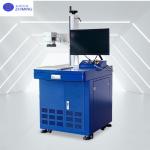
|
Smart Fiber Laser Marking System Serial Codes Logos Traceability |
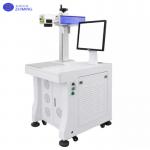
|
Compact Fiber Laser Marking Machine Clean Maintenance Free Marking |
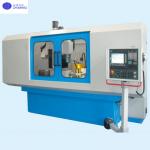
|
CNC Sapphire Surface Grinding Machine Precision Surface Grinder Polisher |
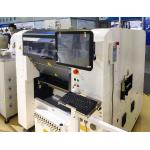
|
Fully Automatic Wafer Thinning Machine Si SiC GaN Ultra-thin Wafer Grinding |

